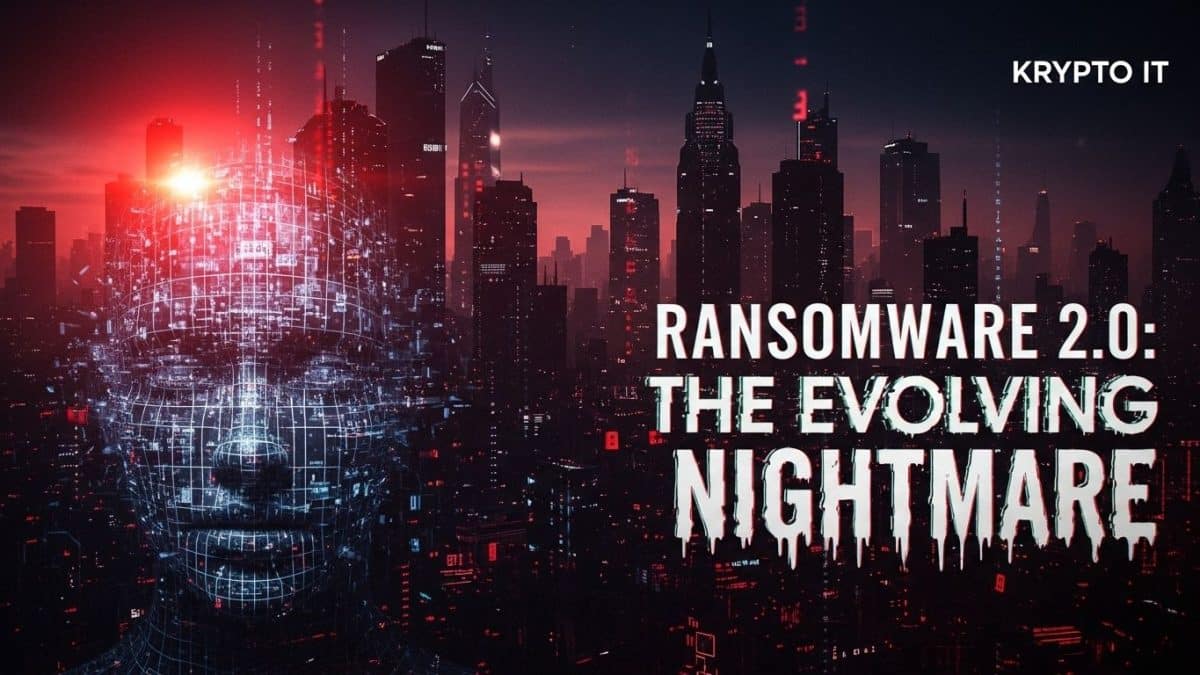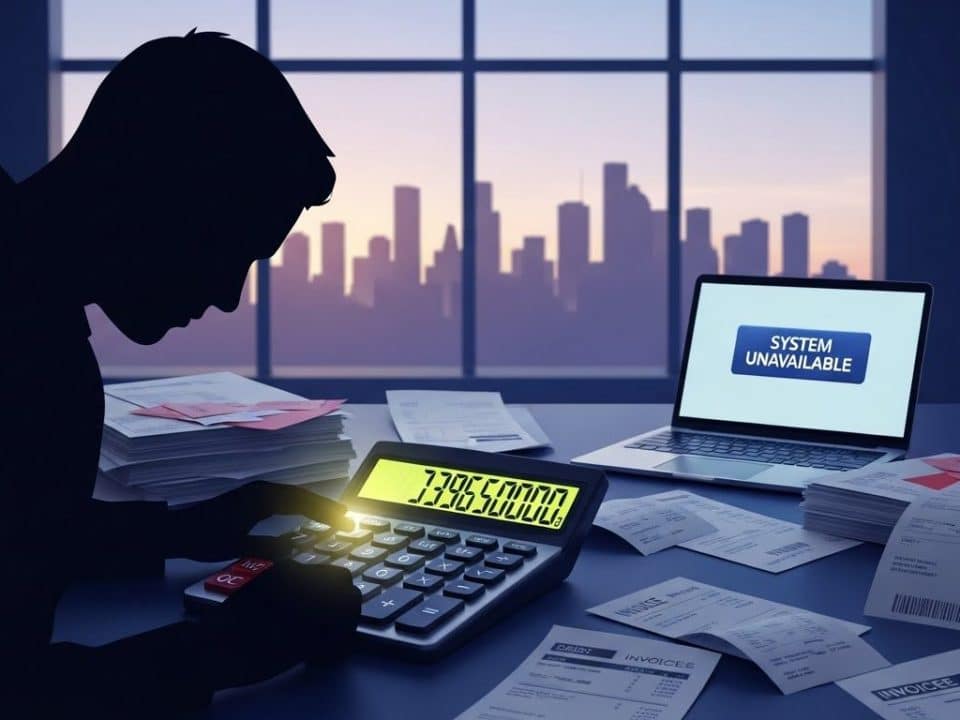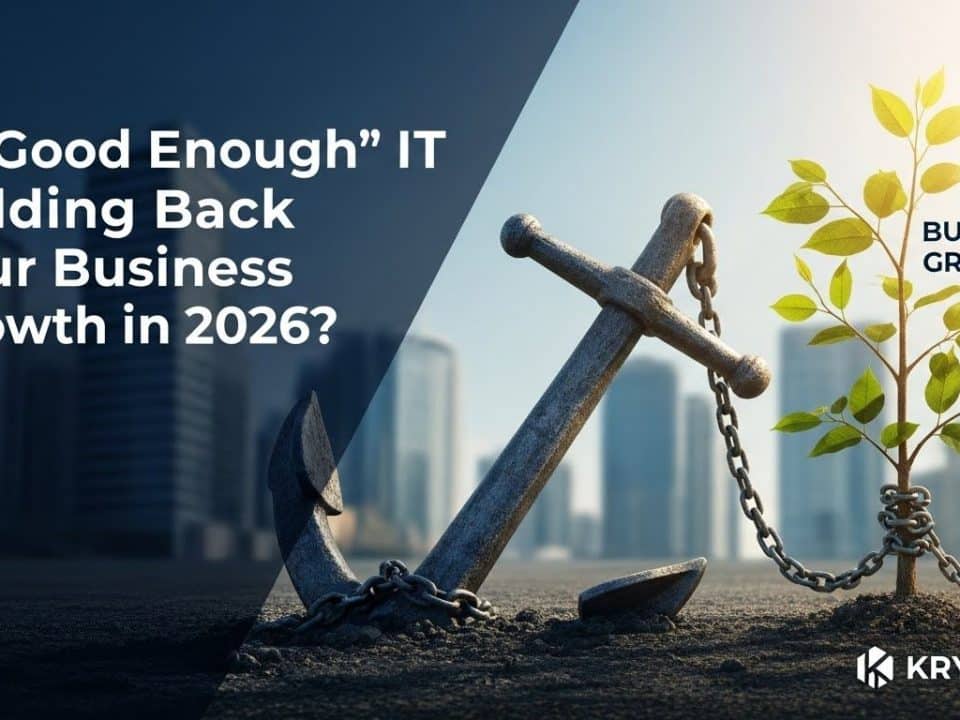
‘Vibe Hacking’: AI’s New Cyber Nightmare
June 8, 2025
Software Supply Chain Under Siege
June 11, 2025Beyond Encryption: Why Modern Ransomware is a Multi-Layered Extortion
Ransomware has long been a top-tier cybersecurity threat, capable of grinding businesses to a halt by encrypting critical data. But the ransomware we knew even a few years ago has evolved. We’re now squarely in the era of Ransomware 2.0, a far more sophisticated, aggressive, and multi-faceted form of cyber extortion. For Small and Medium-sized Businesses (SMBs) in Houston, understanding this evolution is not just about awareness; it’s about survival.
Gone are the days when a robust backup strategy alone was your golden ticket to recovery. Ransomware 2.0 plays a much dirtier game, leveraging tactics that target not just your data’s accessibility, but your reputation, your finances, and even your business relationships.
What is Ransomware 2.0? The New Playbook
Ransomware 2.0 isn’t a single new piece of malware; it’s a shift in the entire attack methodology, characterized by:
- Double Extortion: This is the hallmark of Ransomware 2.0 and has become the new standard. Instead of just encrypting your data, attackers first exfiltrate (steal) a copy of your sensitive information before initiating encryption. If you refuse to pay the ransom for the decryption key, they threaten to publish, sell, or publicly leak your stolen data. This puts immense pressure on victims, as even with perfect backups, the threat of regulatory fines, reputational damage, and legal action from data exposure remains.
- Triple Extortion (and Beyond): Some groups have taken it a step further, adding even more layers of pressure:
- DDoS Attacks: Launching Distributed Denial of Service (DDoS) attacks against your website or services to further disrupt operations and increase financial losses.
- Direct Victim Contact: Contacting individuals whose data was stolen (e.g., your customers, employees, or partners) to inform them of the breach and pressure you into paying.
- Reporting to Regulators: Threatening to report your data breach to relevant regulatory bodies, leading to potential investigations and heavy fines.
- Targeting Cloud Platforms: As more SMBs migrate data and applications to the cloud, attackers are following suit. Cloud-based storage and SaaS platforms are increasingly becoming prime targets for Ransomware 2.0, aiming to disrupt operations and extort large sums.
- Supply Chain Attacks: Instead of directly targeting a single SMB, attackers compromise a trusted vendor or software provider within your supply chain. By injecting malware into legitimate third-party applications or updates, they can compromise a vast number of downstream users (like your business) with a single, highly leveraged attack. The Kaseya and SolarWinds attacks are infamous examples of this devastating tactic.
- Faster, Stealthier, and More Targeted Intrusions:
- Shorter Dwell Times: Attackers are moving from initial breach to data exfiltration and encryption with alarming speed, sometimes in a matter of hours or days, to outpace detection and response efforts.
- Advanced Evasion Tactics: Ransomware 2.0 often employs sophisticated techniques like DLL side-loading, using legitimate tools (like PowerShell or PsExec), and exploiting zero-day vulnerabilities (previously unknown software flaws) to remain undetected and escalate privileges.
- Spear Phishing: Instead of broad, generic phishing campaigns, attackers conduct extensive reconnaissance to craft highly personalized and believable phishing emails that target specific individuals with high-privilege access within your organization.
- Ransomware-as-a-Service (RaaS) Dominance: The RaaS model has significantly lowered the barrier to entry for cybercriminals. Less technically skilled individuals can “rent” sophisticated ransomware tools and infrastructure, paying a percentage of their illicit gains back to the RaaS developers. This fuels the proliferation and professionalization of ransomware operations.
Why Ransomware 2.0 is Devastating for Houston SMBs
While large enterprises make headlines, SMBs are increasingly the primary target for Ransomware 2.0, often due to:
- Perceived Vulnerability: Cybercriminals see SMBs as “low-hanging fruit” – often with limited cybersecurity budgets, outdated technologies, and a lack of dedicated IT security teams.
- Critical Data Value: SMBs often hold valuable customer data, proprietary business information, and access to larger supply chains, making them lucrative targets despite their size.
- Catastrophic Impact: The average cost of a ransomware attack can be devastating, far exceeding the ransom payment itself. This includes extended downtime, costly data recovery, eroded customer trust, potential regulatory penalties, and even business closure. Studies show a significant percentage of SMBs that suffer a major ransomware attack go out of business within six months.
- Backups Alone Are Not Enough: With double and triple extortion tactics, having backups only solves the encryption problem. The threat of data leakage and its associated consequences remains, forcing businesses into a difficult choice.
Defending Your Houston SMB Against Ransomware 2.0
Combating this evolved threat requires a multi-layered, proactive, and adaptive cybersecurity strategy that goes beyond traditional defenses:
- Zero Trust Architecture: Implement a “never trust, always verify” approach. Assume breach, verify every access request, and apply the principle of least privilege. This severely limits lateral movement for attackers who gain an initial foothold.
- Advanced Endpoint Detection & Response (EDR/MDR): Go beyond basic antivirus. EDR/MDR solutions provide continuous monitoring, detect anomalous behavior, and offer rapid response capabilities to identify and neutralize threats before they can encrypt or exfiltrate data.
- Robust Backup and Recovery Strategy (3-2-1 Rule): While not a complete defense, reliable backups remain crucial for data recovery. Follow the 3-2-1 rule: three copies of your data, on two different media types, with one copy stored off-site and preferably offline or air-gapped.
- Multi-Factor Authentication (MFA) Everywhere: Mandate MFA for all remote access, cloud applications, and critical internal systems. This significantly reduces the risk of stolen credentials leading to a breach.
- Network Segmentation: Divide your network into smaller, isolated segments. If one segment is compromised, attackers are contained, limiting their ability to move laterally and encrypt your entire network.
- Continuous Vulnerability Management & Patching: Regularly scan for and immediately patch known vulnerabilities in operating systems, software, and firmware. Attackers relentlessly target unpatched systems.
- Advanced Email Security: Deploy solutions that can detect and block sophisticated phishing, spear phishing, and malware-laden emails, which are common initial entry points for ransomware.
- Employee Security Awareness Training (Continuous): Your employees are your first line of defense. Train them rigorously and regularly on recognizing phishing attempts, social engineering tactics, and the importance of reporting suspicious activity. Include modules on the new extortion tactics.
- Comprehensive Incident Response Plan: Develop and regularly test a clear, documented plan for what to do before, during, and after a ransomware attack. This includes communication strategies, recovery steps, and who to contact.
- Cyber Insurance: Consider robust cyber insurance as a financial safety net, but understand its limitations and ensure it covers the specific risks of Ransomware 2.0, including data exfiltration.
The threat of Ransomware 2.0 is complex and constantly evolving, demanding expert attention. Krypto IT specializes in equipping Houston SMBs with the advanced defenses, proactive strategies, and expert guidance needed to combat this multi-layered extortion nightmare. Don’t wait until it’s too late.
Contact us today to schedule a free consultation and fortify your business against the sophisticated and persistent threat of Ransomware 2.0.




